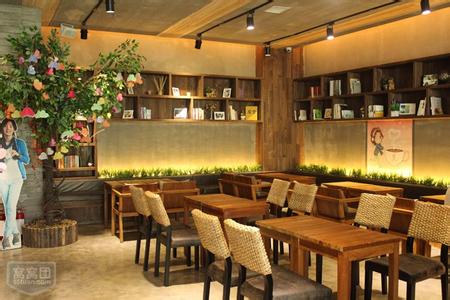Coffee accompany you more than 80 shops in South Korea have been acquired 38% of the shares.
Mr Carmen learned that not long ago, a joint venture between Singapore and Indonesian food companies bought a 38 per cent stake in caf é Bene, making it the company's second-largest shareholder.
It seems that the next step is for coffee to focus on the Southeast Asian market.
Matching the export of Korean current "k-pop" culture, the overseas market of Korean coffee is concentrated in Asia. Around 2013, efforts began to be concentrated.
The huge imagination space of the Chinese market has become the "battleground" of Korean coffee.
However, with the uncontrolled expansion and fragile control system, in just three years, Korean coffee stores have been closed and franchisees have been running away.
The typical coffee accompany you, a brand that is said to have "70% market share" in South Korea, has created a miracle of opening 500 stores in China within a year.
Until the beginning of 2015, his team said that it would continue to open 400 stores across the country, realizing the landing of the second phase of the "Thousand Store Strategy".
According to Korea Contents Media statistics, the number of chain and independent cafes in South Korea increased from 12400 in 2011 to about 49600 in 2015, growing much faster than total coffee consumption.
Seoul alone has more than 17000 cafes, or about 17 for every 10, 000 people.
You know, Starbucks' hometown of Seattle and San Francisco has 15 and 14.7 cafes for every 10,000 people, respectively.
The per capita coffee consumption in South Korea is only about half of that in the United States.
However, with the uncontrolled expansion and fragile control system, in just three years, Korean coffee stores have been closed and franchisees have been running away.
The typical coffee accompany you, a brand that is said to have "70% market share" in South Korea, has created a miracle of opening 500 stores in China within a year.

Important Notice :
前街咖啡 FrontStreet Coffee has moved to new addredd:
FrontStreet Coffee Address: 315,Donghua East Road,GuangZhou
Tel:020 38364473
- Prev

Starbucks' plan to enter Italy this year has caused an uproar.
In many ways, Starbucks and such cafes are like the advanced business cards of the post-industrial capitalist world, making a profit by helping consumers realize their self-awareness. Like food and wine, Apple and iPhone, Google and its APP. The brand has a basic, potential image, and in itself, vagueness means removing some formal freedom and rights, while simply staying.
- Next

Analysis on the Competitiveness of domestic White Coffee manufacturers; Investment Planning suggestions and customer policies of White Coffee Enterprises
Section 1 investigation and Analysis of the Prospect of China's White Coffee Industry from 2017 to 2022 1. White Coffee Industry trend Forecast II. White Coffee Development trend Analysis 3. White Coffee Market Prospect Analysis Section 2 Investment Prospect Analysis of China's White Coffee Industry from 2017 to 2022. Industrial policy analysis II, raw material risk analysis III, market competition risk IV, technology risk analysis 2017-2
Related
- The milk tea cup becomes smaller?! Overlord Tea Girl launches a new "Return to Yunnan" series
- Accused of selling counterfeit and high-priced coffee beans! Well-known boutique coffee brand "Oukelao" bowed and apologized!
- How to make espresso dumplings? Can I eat coffee and glutinous rice balls together?
- Save the unformed and stagnant powder cakes in one second! What is the problem with stagnant water in the powder bowl of the espresso machine?
- What does hand-brewed coffee stop mean? Why is it not recommended to make coffee by hand?
- Is it normal to smell like coffee? Why does coffee smell like alcohol? What's wrong with the strong smell of cold extract ice dripping ice brewed coffee?
- How to solve the problem that hand-brewed coffee extraction takes too long? Why is the water flowing so slowly when making coffee?
- The main points of making Australian white coffee, the proportion details, how does Australian white properly foam and blend the flowers?
- Can ice water make cold extract coffee? What is the difference between room temperature water and ice water for making cold coffee?
- What milk is best for making latte and white Dirty coffee? What is the difference between different brands of fresh milk and pure milk for making coffee?

